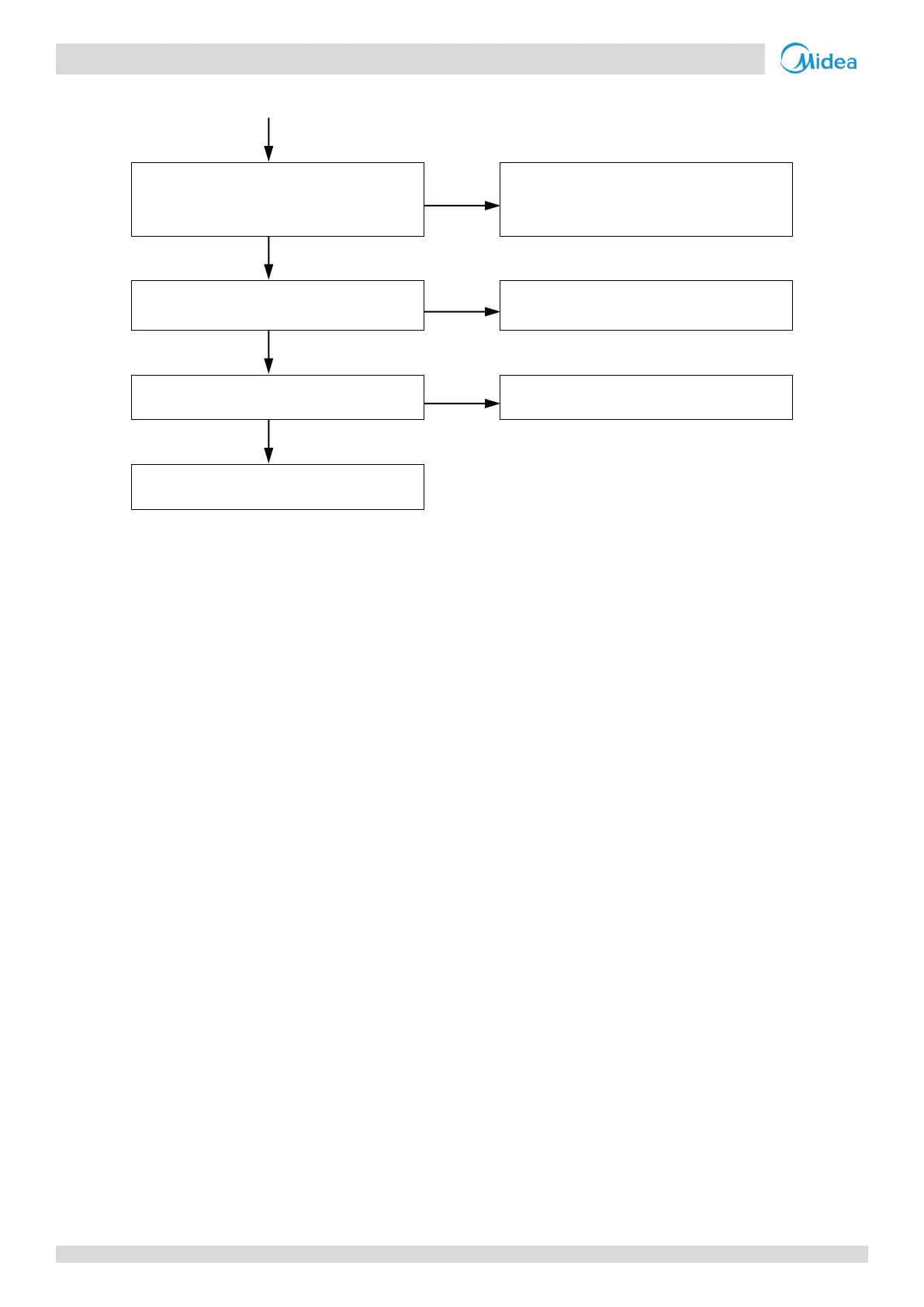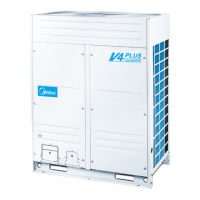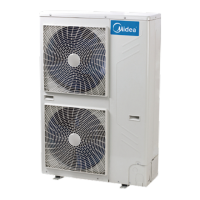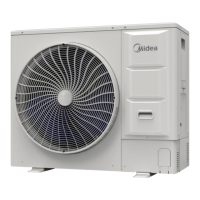V4+R VRF 50/60Hz
78 201608
Midea V4+R Series Service Manual
… flowchart continued from previous page
System contains air or nitrogen
4
Flush all refrigerant then vacuum the
system and recharge the refrigerant. Add
oil to the system if it leaks
The high pressure side is blocked, caused
by crushed or bent pipe or blocked EXV
5
Inspect the system and fix the error
The condenser heat exchange is poor
6
Inspect the system and fix the error
Notes:
1. High pressure sensor connection is port CN17 on the main PCB (labeled 30 in Figure 5-2.1 in Part 5, 2.1 “Ports”).
2. Measure the resistance among the three terminals of the pressure sensor. If the resistance is of the order of mega Ohms or infinite, the pressure sensor
has failed. Refer to Part 2, 1 “Layout of Functional Components”.
3. To check for excess refrigerant:
Excess refrigerant causes discharge temperature to be lower than normal, discharge pressure to be higher than normal and suction pressure to be
higher than normal. For normal system parameters refer to Tables 5-5.4 and 5-5.5 in Part 5, 5.2 “5.2 Normal Operating Parameters of Refrigerant
System”.
4. Air or nitrogen in the system causes discharge temperature to be higher than normal, discharge pressure to be higher than normal, compressor current to
be higher than normal, abnormal compressor noise and an unsteady pressure meter reading. For normal system parameters refer to Tables 5-5.4 and 5-5.5
in Part 5, 5.2 “5.2 Normal Operating Parameters of Refrigerant System”.
5. High pressure side blockage causes discharge temperature to be higher than normal, discharge pressure to be higher than normal and suction pressure to
be lower than normal. For normal system parameters refer to Tables 5-5.4 and 5-5.5 in Part 5, 5.2 “5.2 Normal Operating Parameters of Refrigerant
System”.
6. In cooling mode check outdoor heat exchangers, fans and air outlets for dirt/blockages. In heating mode check indoor heat exchangers, fans and air outlets
for dirt/blockages.
